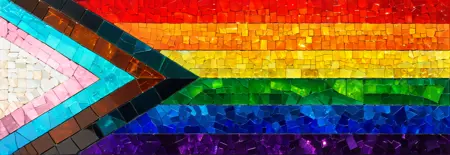Verified: 8 months ago
SafeTensor
The FLUX.1 [dev] Model is licensed by Black Forest Labs. Inc. under the FLUX.1 [dev] Non-Commercial License. Copyright Black Forest Labs. Inc.
IN NO EVENT SHALL BLACK FOREST LABS, INC. BE LIABLE FOR ANY CLAIM, DAMAGES OR OTHER LIABILITY, WHETHER IN AN ACTION OF CONTRACT, TORT OR OTHERWISE, ARISING FROM, OUT OF OR IN CONNECTION WITH USE OF THIS MODEL.
The moss people are spirits from German folklore that inhabit the trees and forest. They are small, clad in moss, and green. Finnish artist Kim Simonsson made a series of moss people with numerous exhibits. This lora is created in part based on photos I took at one of the exhibits. The gallery shows the effect of the lora by itself, as well as in combination with other loras. To know more, don't hesitate to check out the work of Kim Simonsson.
Sample prompts:
A abstract surreal digital portrait of a MossPeople warrior man.
A MossPeople woman sits on an old stone bench
A MossPeople man in sci fi forest background
A MossPeople woman cuddling by the fireplace in a cozy wood cabin. A MossPeople man is in a rocking chair.
Does it work with other loras?
Moss people are a concept (e.g., "triangles have three sides"), not a style (e.g., impressionist paintings). So in theory, yes, you could render moss people using loras that capture a variety of styles. Examples are shown in the model's gallery. However, some loras are very powerful in defining their styles so they would wipe out most (or all) of the features that define moss people -- you may just be left with a little bit of green. This is most common in loras that define very unique styles, for example from a single illustrator. You are most welcome to share your experiences in using moss people along with other loras, so that all can see what works (or does not)!
To learn more:
Kim Simonsson creates his "Moss People" sculptures using a ceramic base combined with a process called flocking. He sculpts life-sized figures, often depicting children or animals, and applies fine nylon fibers that are electrostatically charged to stand upright, creating a velvety, moss-like texture on the surface. Pigments are added to the flocking material to achieve the signature green color, enhancing the illusion of natural moss. By leaving certain areas unflocked, Simonsson highlights intricate details and creates striking visual contrast, blending traditional ceramic craftsmanship with innovative surface treatments.
Kim Simonsson's "Moss People" are inspired by Nordic mythology, nature, and the innocence of childhood, blending human and natural elements to evoke a sense of enchantment. The moss-like texture symbolizes a connection to forests and the natural world, as if the figures belong to an unseen, magical realm. Their mysterious poses and expressions, often paired with fantastical elements, create an ethereal narrative that bridges folklore and the modern world. The sculptures invite viewers to explore themes of transformation, innocence, and humanity’s deep ties to nature.
The sculptures have been exhibited in prestigious venues worldwide, including the Claire Oliver Gallery in New York, the ARoS Aarhus Art Museum in Denmark, and the Design Museum in Helsinki. The sculptures have also been prominently featured in public spaces. In 2022, monumental versions of these figures were displayed in Lille, France, as part of the "Utopia" festival, transforming the city center with their enchanting presence. Later that year, over two dozen "Moss Children" were showcased across six venues during the 16th Lyon Biennale. In 2024, the "Moss Giants" were exhibited outdoors in central Helsinki, marking the first time Simonsson's works were displayed in this setting. Originally created for the French festival lille3000, these giants were later permanently installed in the forests of Söderlångvik manor on Kemiö Island.



